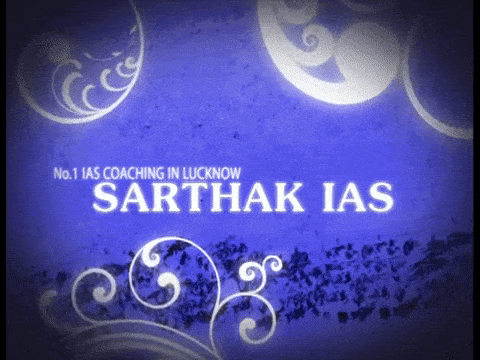The Quran, no doubt, permits a Mohammedan to marry four wives at a time, but monogamy seems to have been the rule among the lower stratum of society in both the communities, during the Mughal period. Akbar had issued definite orders that a man of ordinary means should not possess more than one wife unless the first proed to be barren. He considered it to be highly injurious to a man’s health as well as economy to keep more than one wife. Mirza Aziz Koba’s well-known proverb deserves mention. He used to say that “a man should marry four wives, a Persian to have somebody to take to, a Khurasani for his housework, a Hindu woman for nursing his children and a woman of Mavarunnahar to have someone of the whip as a warming for the three.” The co-wives rivaled each other and thus domestic unhappiness was the natural outcome.
AS we are considered as best IAS Coaching in Lucknow so that it is our responsibility to let you know that how to prepare IAS exam, In this sequence we are telling you about medieval India’s women conditions.
Hindus, with the exception of a small number of prices and very wealthy persons, strictly restricted themselves to monogamy as enjoined by their social custom. Della Valle writes. “Hindus take but on a wife and never divorce her till death, except for the cause of adultery. In the extreme case, if a wife proved to be barren, they had the liberty to marry another with the consent of the Brahmins.
On account of political and socio-religious circumstances of the time, parents tried to marry their daughters as early as possible. The custom in those days did not allow, for whatever reasons, the girl to remain in the parent’s home for more for more than 6 to 8 years after their birth. One of the Brahmins generals of the Peshwa was filled with great anxiety because his daughter’s marriage could not be arranged at the age of nine. “If the marriage is postponed to the next year”, he wrote from the battlefield, “the bride will be as old as ten. It will be a veritable calamity and scandal.” Child-marriage left no room for either the bride or the bridegroom the have time to think of a mate of their own choice. Money played an important part when a marriage was arranged between persons of unequal ages or social status.
As a wife, the Indian girl was under the command of her mother-in-law. She had to please every member of the family and do all sorts of domestic works, including the cleaning of cooking pots and utensils. But when grown up and away from this dominating influence of her mother-in-law, a middle-class lady had large powers in the management of the household. She had considerable say in the administration and management of her household.
Divorce and marriages, common among Muslims were prohibited to Hindu women. Widow-remarriage, except for the lower caste people, had disappeared almost completely in Hindu society during the early medieval age. This custom suffered little change during the Mughal days and was even more rigorously enforced. Sati was a prevalent practice, in spite of the efforts of the Mughals to check it. Even the betrothed girls had to commit sati on the funeral pyres of there would be the headband. Widowhood was considered a punishment for the sins of one’s previous life. Society looked upon them.
Whatever might have been the position of woman as a girl, bride, and widow, she certainly occupied a most respectable position in society as a mother. Manu emphatically asserts that a mother is more to be reversed than a thousand fathers.” Apastambha writes, “women as mothers are the best and the foremost preceptors of children.” The Mohammedan religion, too, enjoins upon its followers to king down to the peasant, all had the greatest respect for their mothers and for elderly women whose commands were invariably obeyed.
But perhaps no people showed greater regard for their mothers than the Rajputs. We can find no better illustration than to quote the ever recurring simile that make them mother’s milk resplendent.
So far as property rights were concerned, Mohammedan ladieswere much better off that their Hindu sisters; A Muhammadan lady were entitled to a definite share in the inheritance with absolute right to dispose of it. Unlike her Hindu sister, she retained this right even after marriage. Another method adopted to safeguards the interests of Muslim ladies after marriage was Mahar or inner spatial settlement, whereas a Hindu lady had no right to the property of her husband’s parents. It appears that eh constant seclusion brought about the social, political and intellectual stultification of women who could not exert themselves for their legitimate rights. From the legal standpoint, they were reduced to a position of dependency in every sphere of life.
Indian women helped their husbands in their professions. Some of them engaged themselves in an independent profession like medicine, midwifery, tailoring etc.
In spite of the Pardah which obstructed high-class ladies from participating in the social life of the nation, quite a large number of talented women mad a mark in different sphere during the two centuries of Mughal rule in India.
Gulbadan Begum, the author of the Humaynama and Jahanara, the biographer of Shibyah and Munisal Arwah, hold and enviable position among the literary figures of that age. Jan Bugum, the daughter of Khan-e-Khanan, is said to have written a commentary on the Quran. Mira Bai, Salima Sultana, Nur Jahan, Siti-un-nisha, the tutoress of Jahanara and renowned as “the princess of poets” and Zeb-un-nisha, the eldest daughter of Aurangzeb, were poetesses of distinction. In Maharashrta Aka Bai and Kena Bai, disciples of Ramdas Swami, were considered important literary figures in the 17th century.
In the administrative sphere too, they did not lag behind. Some of the greatest women administrators of all ages belong to this period. Maham Anaga, the chief nurse, and muse of Akbar, controlled affairs of the state for full four years (15060-64) by sheer audacity and cleverness. Rani Durgawati, the chandel princess of Gondwana, “famous for her beauty and accomplishment “governed her country with great courage and capacity. Vicent Smith comments: “Her country was better administered and more prosperous than that of Akbar the Great.” Chand Bibi’s name shines brilliantly in the annals of Ahmadnagar. Nurjahan was the real power behind the throne of Jahangir. Even the proudest peer of the realm paid their homage to her, knowing full well that a word from her would make or mar their career.
Indian women belonging to royal and noble families, particularly the Rajputanis were trained as soldiers and often displayed great bravery, courage, and heroism. For example, Nurjahan gave ample proof of her martial capabilities in leading an attack against Mahabt Khan.
Several travelers on different occasions have made special mention of the high character of Hindu ladies. The chastity of Hindu women was proverbial. Tavernier remarks that Adultery is very rate among them and as far sodomy, I never heard it mentioned.” Grose writes: If anyone looked at them deliberately in the bazaar or even while they stood at their doors, they resented it as a high affront and uttered “Dekh na mai”(look here and don’t you die).
Death had no terror for these heroic ladies when their honor was at stake. It was certainly less dreadful than dishonor and captivity. Such was the ideal of India’s womanhood during the Mughal age.



